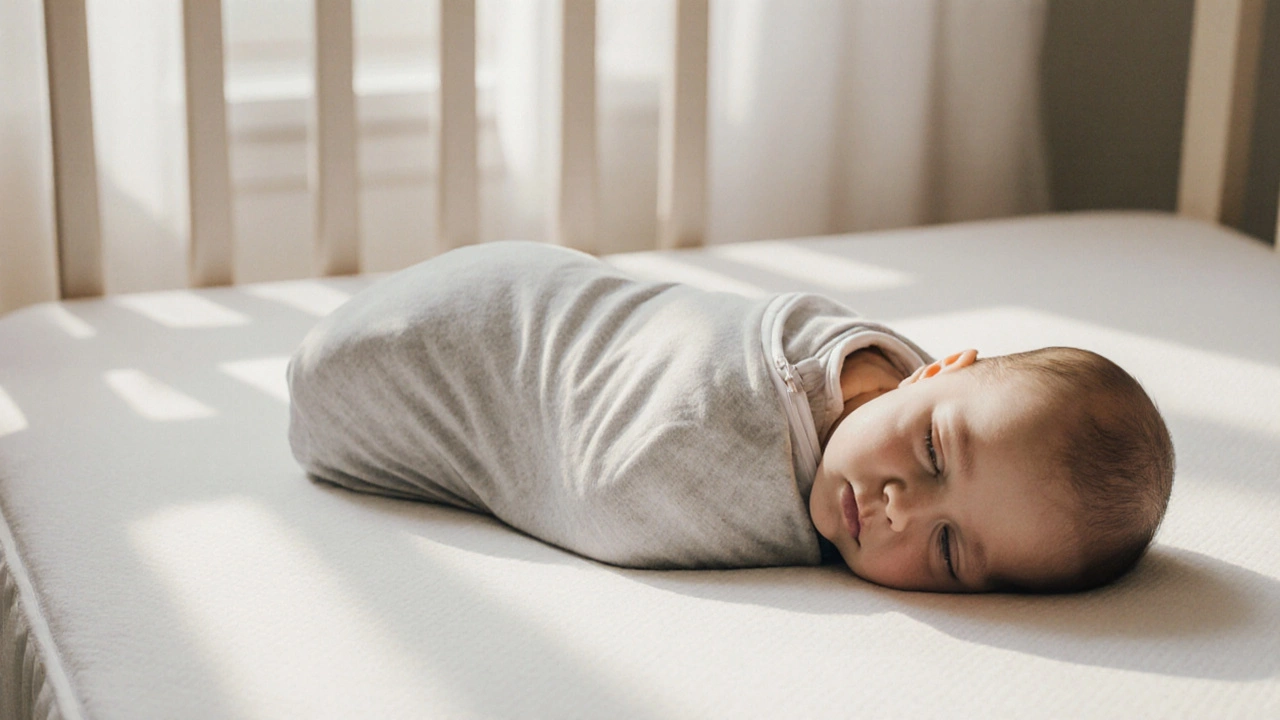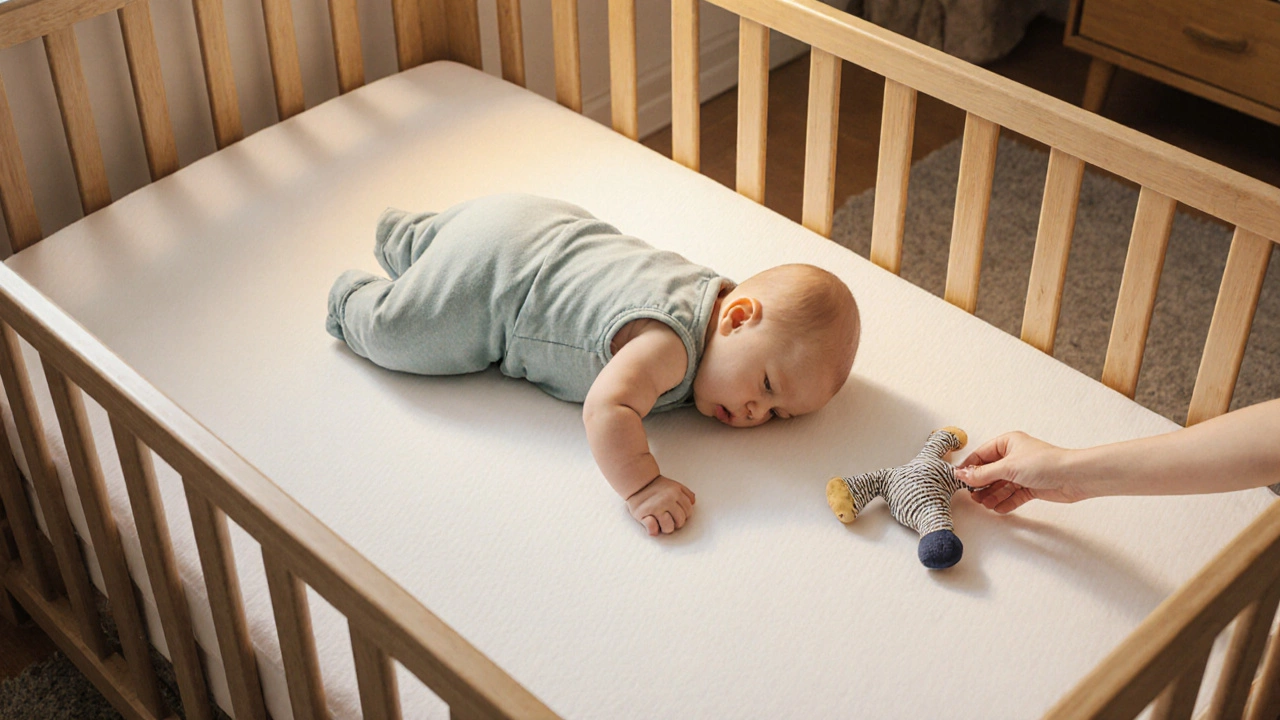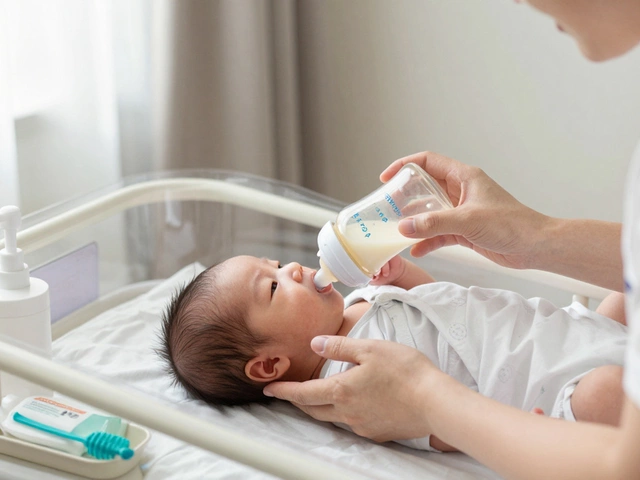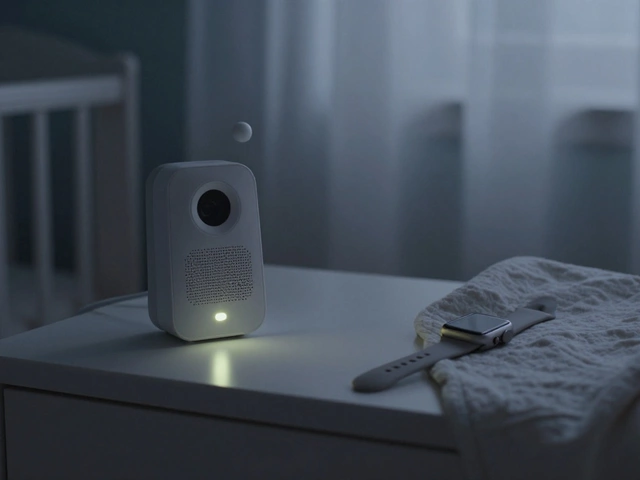
Safe Sleep Temperature Calculator
Determine the perfect sleep sack TOG rating for your baby based on room temperature and age. Avoid overheating and ensure safe sleep practices.
Every new parent hears the same warning: never put a loose blanket in your baby’s crib. The American Academy of Pediatrics says soft bedding increases the risk of SIDS by up to 50%. But what do you do when your baby seems to need something soft to cuddle? You don’t have to choose between safety and comfort. There are better, safer ways to keep your baby warm and calm at night.
Swaddle Sacks Are the Gold Standard
Swaddle sacks-also called wearable blankets-are the most trusted replacement for traditional baby blankets. They’re made of breathable cotton or bamboo, fit snugly around the body, and leave the legs free to move. Unlike loose blankets that can slip over the face, swaddle sacks stay put. Brands like Love to Dream, SwaddleUp, and Halo make versions with zippered closures and arm-out options for older babies.
Use a swaddle sack when your baby is under 2 months old and still has the startle reflex. Once they start rolling, switch to a sleeveless version. Look for ones rated for TOG (thermal overall grade)-1.0 TOG is perfect for room temperatures around 68-72°F. Too thick, and your baby overheats. Too thin, and they’ll shiver.
Sleep Sacks for Rolling Babies
Once your baby rolls over-usually between 3 and 6 months-swaddling is no longer safe. That’s when a sleep sack becomes your new best friend. These look like a onesie with a sleeping bag attached. No strings, no tucks, no risk of covering the face.
Many sleep sacks have armholes, so your baby can move their hands to self-soothe. Some even have built-in footies or zipper guards to prevent pinching. The key is fit: it should be snug but not tight. If you can fit two fingers between the sack and your baby’s chest, it’s the right size.
Choose a sleep sack with a zipper that opens from the bottom. It makes midnight diaper changes way easier. Avoid ones with hoods-they’re a choking hazard. And never use a sleep sack with a blanket inside. That defeats the whole purpose.
Loveys: The Transitional Comfort Item
By 12 months, many babies start forming attachments to small, soft objects. These are called loveys. A lovey can be a tiny blanket, a stuffed animal with no removable parts, or a fabric square with a tag or corner your baby likes to rub.
Here’s the rule: never put a lovey in the crib until your baby is at least 12 months old. Before that, even a small plush toy is a suffocation risk. After 12 months, the American Academy of Pediatrics says it’s generally safe-if the lovey is small (no bigger than your hand), has no buttons or eyes that can come off, and is made of breathable material.
Some parents use a lovey that’s attached to a wearable blanket, so it stays close but doesn’t float around. Others just let the baby hold it during bedtime routines, then remove it once they’re asleep. Either way, avoid anything with strings, ribbons, or long fibers.

Why Not Use a Receiving Blanket?
You might think, “But I used a receiving blanket when I was a kid!” That’s true. But safety standards have changed. In the 1990s, SIDS rates were twice what they are today. The drop? Not magic. It came from ditching loose bedding.
A receiving blanket is thin, yes-but it’s also easy to tuck, shift, or pull over the baby’s head. Even if you think you’ve tucked it in tight, a moving baby can loosen it in seconds. One study from the CDC tracked over 2,000 infant sleep deaths and found that 72% involved loose bedding or soft objects in the crib.
There’s no safe way to use a receiving blanket in the crib. Not even folded into a triangle. Not even under the mattress. If it’s not attached to your baby’s body, it’s not safe.
What About Thermal Sleepwear?
Some parents think putting their baby in a thick onesie or fleece pajamas is enough. But that’s risky too. Babies can’t regulate their temperature like adults. Too many layers = overheating = higher SIDS risk.
Instead, dress your baby in one layer more than what you’d wear in the same room. If you’re in a t-shirt, they’re in a onesie. If you’re in a sweater, they’re in a long-sleeve onesie plus a sleep sack. Use a room thermometer. Ideal temperature? 68-72°F. If it’s hotter, skip the sleep sack and use a lightweight cotton onesie.
Never use electric blankets, heating pads, or heated crib mattresses. These aren’t just unsafe-they’re banned by the CPSC for infant use.

What to Avoid Completely
Even if something looks harmless, skip it:
- Positioners-those wedge-shaped pillows that claim to prevent reflux. They’re linked to suffocation.
- Plush toys-even small ones-before age 12 months.
- Quilts, duvets, or comforters-no matter how cute or handmade.
- Sheets with elastic corners-if they don’t fit your mattress perfectly, they can come loose and create a gap.
- Bedding with ties or ribbons-these can wrap around a baby’s neck.
The crib should be bare except for a firm mattress and a fitted sheet that snaps tightly around all four corners. No extras. No exceptions.
How to Transition from Blankets to Sleep Sacks
If your baby is used to being swaddled with a blanket, switching can be tough. They might cry. They might fight sleep. That’s normal. Here’s how to make it easier:
- Start during naps first. It’s less stressful than nighttime.
- Use the same fabric. If your baby liked the cotton receiving blanket, pick a sleep sack made of the same material.
- Let them hold a small lovey during the transition-just not in the crib yet.
- Use white noise or a consistent bedtime routine to replace the feeling of being wrapped.
- Be patient. It can take 3-7 days for a baby to adjust.
Some babies love sleep sacks right away. Others take weeks. Don’t give up. The payoff? Fewer wake-ups, fewer panic moments at 3 a.m., and peace of mind knowing your baby is sleeping safely.
Final Rule: Keep It Simple
The safest crib is the one with the least stuff in it. No blankets. No pillows. No bumpers. No stuffed animals. Just a firm mattress and a fitted sheet.
For warmth, use a sleep sack or swaddle sack that fits right. For comfort, give your baby a lovey after their first birthday. For peace of mind, trust the science-not tradition.
There’s no perfect substitute for a baby blanket. But there are better options. And they’re not just safer-they’re easier. Once you stop wrestling with tucked-in corners and midnight blanket escapes, you’ll wonder why you ever used blankets at all.
Can I use a receiving blanket in the crib if I tuck it in tightly?
No. Even tightly tucked blankets can come loose when your baby moves. The American Academy of Pediatrics says any loose bedding-even if you think it’s secure-increases the risk of suffocation. Use a wearable blanket or sleep sack instead.
When can I introduce a lovey to the crib?
Wait until your baby is at least 12 months old. Before that, even small objects like a stuffed animal or fabric square can block their airway. After 12 months, choose a lovey that’s small (no bigger than your hand), has no detachable parts, and is made of breathable fabric.
Are sleep sacks better than swaddle sacks?
It depends on your baby’s age. Swaddle sacks are for newborns who haven’t started rolling yet-they help calm the startle reflex. Sleep sacks are for babies who roll over, sit up, or stand-they’re sleeveless and allow full movement. Use swaddle sacks until 2-3 months, then switch to sleep sacks.
How do I know if my baby is too hot or too cold?
Check your baby’s chest or back of the neck. If it feels warm and dry, they’re at the right temperature. If it’s sweaty or flushed, they’re too hot. If it’s cool or cold, add a layer. Never rely on hands or feet-they’re naturally cooler. Keep the room between 68-72°F.
What if my baby hates sleep sacks?
Some babies resist the change. Try introducing the sleep sack during daytime naps first. Use the same fabric as their old blanket. Add a consistent bedtime routine-bath, book, song-to signal sleep time. Give it 3-7 days. Most babies adjust faster than you think.






